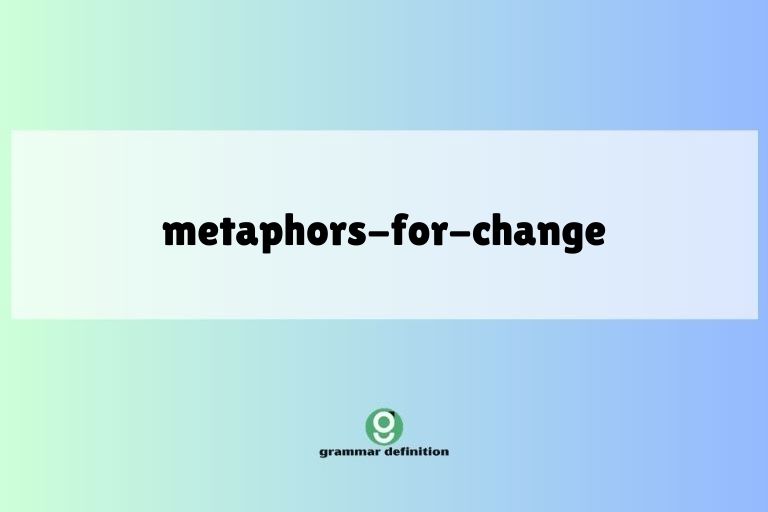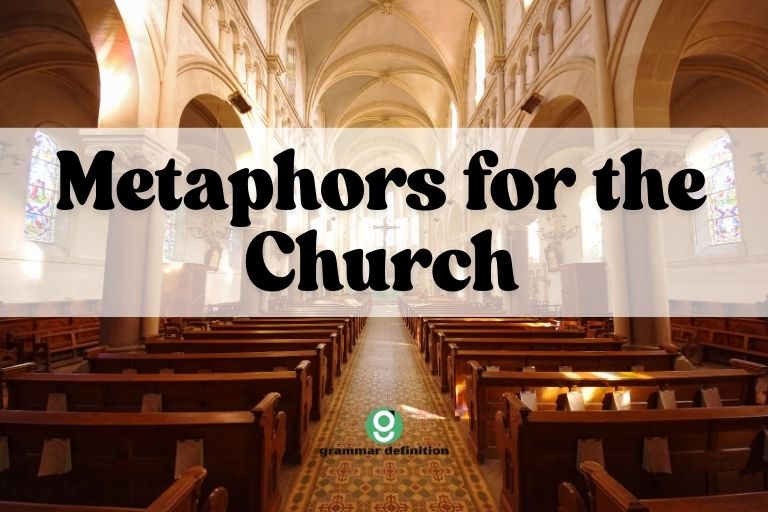Metaphors for Jesus: Exploring Figurative Language

Understanding metaphors is crucial for interpreting literature, poetry, and even everyday language. When we delve into the study of religious texts, metaphors become even more significant.
In Christianity, the figure of Jesus Christ is often described using a rich tapestry of metaphors. These metaphors aren’t merely decorative; they provide profound insights into his nature, role, and relationship with humanity.
This article explores the common metaphors used for Jesus, providing a comprehensive overview of their meanings and significance. This guide is beneficial for students of theology, literature enthusiasts, and anyone interested in deepening their understanding of Christian symbolism and language.
Table of Contents
- Introduction
- Definition of Metaphor
- Structural Breakdown of Metaphors
- Categories of Metaphors for Jesus
- Examples of Metaphors for Jesus
- Usage Rules and Context
- Common Mistakes in Interpreting Metaphors
- Practice Exercises
- Advanced Topics in Metaphorical Interpretation
- Frequently Asked Questions
- Conclusion
Definition of Metaphor
A metaphor is a figure of speech that directly compares two unrelated things, asserting that they are the same, even though they are literally different. It’s a way of transferring qualities or characteristics from one thing to another to create a new understanding. Unlike similes, which use words like “like” or “as” to make a comparison, metaphors make a direct assertion of similarity. Metaphors enrich language by adding layers of meaning and evoking vivid imagery.
In the context of religious language, metaphors are powerful tools for conveying abstract spiritual concepts. They allow us to grasp complex ideas about God, faith, and the human condition by relating them to familiar, concrete experiences.
The metaphors used to describe Jesus are particularly significant because they reveal aspects of his character, mission, and relationship with believers.
Structural Breakdown of Metaphors
A metaphor typically consists of two main elements: the tenor and the vehicle. The tenor is the subject being described (in our case, Jesus). The vehicle is the object or concept that is used to describe the tenor. The vehicle lends its qualities to the tenor, creating a metaphorical meaning.
For example, in the metaphor “Jesus is the Good Shepherd,” Jesus is the tenor, and “Good Shepherd” is the vehicle. The qualities associated with a good shepherd – care, protection, guidance – are transferred to Jesus, implying that he cares for, protects, and guides his followers.
Understanding this structure helps us to analyze and interpret metaphors effectively.
Another important aspect of metaphors is the ground. The ground refers to the shared characteristics or similarities between the tenor and the vehicle. In the “Good Shepherd” metaphor, the ground includes the ideas of leadership, responsibility, and protection. Identifying the ground is crucial for understanding the intended meaning of the metaphor.
Categories of Metaphors for Jesus
The Bible employs a wide range of metaphors to describe Jesus, each highlighting different aspects of his identity and role. Here are some of the most prominent categories:
Jesus as the Good Shepherd
The metaphor of Jesus as the Good Shepherd is one of the most tender and comforting images found in the Gospels. It emphasizes his care, protection, and guidance towards his followers.
A shepherd is responsible for the well-being of his flock, leading them to pasture, protecting them from danger, and even sacrificing his own life for them. By calling himself the Good Shepherd, Jesus indicates his deep commitment to his followers and his willingness to make the ultimate sacrifice for their salvation.
Jesus as the Light of the World
Darkness often symbolizes ignorance, evil, and despair. In contrast, light represents knowledge, goodness, and hope.
When Jesus declares himself the Light of the World, he is claiming to illuminate the path to truth and salvation. This metaphor suggests that he dispels the darkness of sin and brings clarity and understanding to those who follow him.
He guides people out of spiritual darkness into the light of God’s grace.
Jesus as the Bread of Life
Bread is a staple food, essential for physical sustenance. By referring to himself as the Bread of Life, Jesus suggests that he is essential for spiritual sustenance.
Just as bread nourishes the body, Jesus nourishes the soul. This metaphor highlights the idea that believers must continually partake of Jesus through faith and communion to maintain their spiritual health and vitality.
He satisfies the deepest hunger within us.
Jesus as the Door
A door provides access to a particular place. When Jesus says, “I am the door,” he is stating that he is the only way to access God and salvation.
He is the gateway to eternal life. This metaphor emphasizes the exclusivity of Jesus’ role as the mediator between God and humanity.
It highlights that only through him can people enter into a relationship with God.
Jesus as the True Vine
A vine provides life and nourishment to its branches. Jesus uses the metaphor of the True Vine to illustrate the vital connection between himself and his followers.
Believers are the branches, and they must remain connected to the vine (Jesus) to receive the life and nourishment they need to thrive spiritually. This metaphor emphasizes the importance of abiding in Christ and maintaining a close relationship with him.
Jesus as the Lamb of God
In the Old Testament, lambs were often sacrificed as atonement for sins. By calling Jesus the Lamb of God, John the Baptist identifies him as the ultimate sacrifice for the sins of humanity.
This metaphor highlights Jesus’ sacrificial death on the cross as the means of redemption and reconciliation with God. He is the perfect and spotless offering that takes away the sin of the world.
Jesus as King of Kings
Kings are rulers who possess authority and power. The title “King of Kings” signifies that Jesus is the ultimate ruler, supreme over all earthly authorities.
This metaphor emphasizes his sovereignty and dominion over all creation. It highlights his rightful place as the Lord of all.
It speaks to his coming kingdom and reign.
Jesus as the Cornerstone
The cornerstone is the foundation of a building, providing stability and support. By referring to Jesus as the Cornerstone, the Bible suggests that he is the foundation of the Church and the basis for faith.
This metaphor emphasizes his importance as the essential element upon which everything else is built. He is the solid and reliable foundation that will never crumble.
Jesus as Mediator
A mediator is someone who intervenes between two parties to reconcile them. Because sin has separated humanity from God, Jesus acts as the mediator, bridging the gap and restoring the relationship.
This metaphor emphasizes his role as the one who brings humanity back into fellowship with God through his sacrifice and intercession.
Jesus as the Bridegroom
In the context of marriage, the bridegroom represents love, commitment, and provision. The metaphor of Jesus as the Bridegroom highlights the intimate and loving relationship between Christ and his Church, often referred to as the Bride.
This emphasizes the deep affection, care, and commitment that Jesus has for his followers. It paints a picture of a loving and devoted relationship.
Examples of Metaphors for Jesus
The following tables provide specific examples of each metaphor, along with biblical references and explanations:
Table 1: Jesus as the Good Shepherd
This table showcases examples of Jesus being referred to as the Good Shepherd, highlighting the care and protection he offers.
| Metaphor | Biblical Reference | Explanation |
|---|---|---|
| The Good Shepherd lays down his life for the sheep. | John 10:11 | Jesus willingly sacrifices himself to protect his followers. |
| I am the good shepherd; I know my sheep and my sheep know me. | John 10:14 | Jesus has a personal and intimate relationship with his followers. |
| My sheep listen to my voice; I know them, and they follow me. | John 10:27 | Jesus’ followers recognize and obey his teachings. |
| He tends his flock like a shepherd: He gathers the lambs in his arms and carries them close to his heart. | Isaiah 40:11 | Jesus cares for the weak and vulnerable among his followers. |
| For you were like sheep going astray, but now you have returned to the Shepherd and Overseer of your souls. | 1 Peter 2:25 | Jesus guides those who have wandered away from God back to safety. |
| The Lord is my shepherd; I shall not want. | Psalm 23:1 | A classic verse portraying God (and by extension, Jesus) as a provider. |
| I will place over them one shepherd, my servant David, and he will tend them; he will tend them and be their shepherd. | Ezekiel 34:23 | Fulfilling the Davidic covenant with a shepherd-king. |
| As a shepherd seeks out his flock when he is among his scattered sheep, so will I seek out my sheep. | Ezekiel 34:12 | God, through Jesus, actively seeks out the lost. |
| “Suppose one of you has a hundred sheep and loses one of them, doesn’t he leave the ninety-nine in the open country and go after the lost sheep until he finds it?” | Luke 15:4 | Parable of the Lost Sheep emphasizes Jesus’ relentless pursuit of the lost. |
| And when he finds it, he joyfully puts it on his shoulders and goes home. | Luke 15:5 | Illustrates the joy of Jesus in finding and saving the lost. |
| Then he calls his friends and neighbors together and says, ‘Rejoice with me; I have found my lost sheep.’ | Luke 15:6 | The community rejoices in the salvation of one who was lost. |
| I am the gate for the sheep. | John 10:7 | Jesus protects the sheep from harm. |
| All who have come before me are thieves and robbers, but the sheep have not listened to them. | John 10:8 | Warning against false shepherds. |
| I have come that they may have life, and have it to the full. | John 10:10 | Jesus’ purpose is to provide abundant life. |
| I am the good shepherd. The good shepherd lays down his life for the sheep. | John 10:11 | Reiterates the self-sacrificing nature of Jesus. |
| The hired worker is not a shepherd and does not own the sheep. So when he sees the wolf coming, he abandons the sheep and runs away. Then the wolf attacks the flock and scatters it. | John 10:12 | Contrast between the true shepherd and the uncaring hired hand. |
| The hired worker runs away because he is a hired worker and does not care about the sheep. | John 10:13 | Lack of genuine concern from those who are not true shepherds. |
| I am the good shepherd; I know my sheep and my sheep know me— | John 10:14 | Emphasis on the mutual knowledge and relationship. |
| just as the Father knows me and I know the Father—and I lay down my life for the sheep. | John 10:15 | Parallel between Jesus’ relationship with the Father and his sheep. |
| I have other sheep that are not of this sheep pen. I must bring them also. They too will listen to my voice, and there shall be one flock and one shepherd. | John 10:16 | Inclusion of Gentiles into the flock. |
| The reason my Father loves me is that I lay down my life—only to take it up again. | John 10:17 | Jesus’ voluntary sacrifice is pleasing to the Father. |
| No one takes it from me, but I lay it down of my own accord. I have authority to lay it down and authority to take it up again. This command I received from my Father. | John 10:18 | Jesus has the power to resurrect himself. |
Table 2: Jesus as the Light of the World
This table provides examples of how Jesus is portrayed as the Light of the World in the Bible.
| Metaphor | Biblical Reference | Explanation |
|---|---|---|
| I am the light of the world. Whoever follows me will never walk in darkness, but will have the light of life. | John 8:12 | Following Jesus leads to spiritual enlightenment and eternal life. |
| While I am in the world, I am the light of the world. | John 9:5 | Jesus’ presence in the world brings illumination and understanding. |
| The people living in darkness have seen a great light; on those living in the land of the shadow of death a light has dawned. | Matthew 4:16 | Jesus’ arrival brings hope and salvation to those in spiritual darkness. |
| Your word is a lamp for my feet, a light on my path. | Psalm 119:105 | The teachings of Jesus (the Word) guide believers. |
| For you were once darkness, but now you are light in the Lord. Live as children of light. | Ephesians 5:8 | Believers are called to reflect Jesus’ light in their lives. |
| The city does not need the sun or the moon to shine on it, for the glory of God gives it light, and the Lamb is its lamp. | Revelation 21:23 | In the new Jerusalem, Jesus is the source of light. |
| Arise, shine, for your light has come, and the glory of the Lord rises upon you. | Isaiah 60:1 | Prophecy about the coming of Christ as light. |
| The Lord is my light and my salvation—whom shall I fear? The Lord is the stronghold of my life—of whom shall I be afraid? | Psalm 27:1 | God (through Jesus) provides light and protection. |
| He will become a light for the Gentiles, that you may bring salvation to the ends of the earth. | Isaiah 49:6 | Jesus’ light extends to all nations. |
| This is the verdict: Light has come into the world, but people loved darkness instead of light because their deeds were evil. | John 3:19 | People reject Jesus because they prefer darkness. |
| Everyone who does evil hates the light, and will not come into the light for fear that their deeds will be exposed. | John 3:20 | Evil deeds are hidden from the light. |
| But whoever lives by the truth comes into the light, so that it may be seen plainly that what they have done has been done in the sight of God. | John 3:21 | Truth-seekers embrace the light. |
| Put your trust in the light while you have it, so that you may become children of light. | John 12:36 | Believing in Jesus makes one a child of light. |
| I have come into the world as a light, so that no one who believes in me should stay in darkness. | John 12:46 | Faith in Jesus dispels darkness. |
| You are the light of the world. A town built on a hill cannot be hidden. | Matthew 5:14 | Believers are called to be a light to the world. |
| Neither do people light a lamp and put it under a bowl. Instead they put it on its stand, and it gives light to everyone in the house. | Matthew 5:15 | Believers should not hide their light. |
| In the same way, let your light shine before others, that they may see your good deeds and glorify your Father in heaven. | Matthew 5:16 | Good deeds reflect Jesus’ light. |
| The eye is the lamp of the body. If your eyes are healthy, your whole body will be full of light. | Matthew 6:22 | Spiritual clarity leads to inner light. |
| But if your eyes are unhealthy, your whole body will be full of darkness. If then the light within you is darkness, how great is that darkness! | Matthew 6:23 | Spiritual blindness leads to great darkness. |
| The path of the righteous is like the morning sun, shining ever brighter till the full light of day. | Proverbs 4:18 | Righteousness leads to increasing light. |
| The way of the wicked is like deep darkness; they do not know what makes them stumble. | Proverbs 4:19 | Wickedness leads to darkness and confusion. |
| For with you is the fountain of life; in your light we see light. | Psalm 36:9 | God is the source of both life and light. |
Table 3: Jesus as the Bread of Life
This table shows examples of Jesus being referred to as the Bread of Life, nourishing believers spiritually.
| Metaphor | Biblical Reference | Explanation |
|---|---|---|
| I am the bread of life. Whoever comes to me will never go hungry, and whoever believes in me will never be thirsty. | John 6:35 | Jesus satisfies both spiritual hunger and thirst. |
| I am the living bread that came down from heaven. Whoever eats this bread will live forever. This bread is my flesh, which I will give for the life of the world. | John 6:51 | Partaking of Jesus’ sacrifice brings eternal life. |
| Your ancestors ate manna in the wilderness, yet they died. But here is the bread that comes down from heaven, which anyone may eat and not die. | John 6:49-50 | Jesus is superior to the manna that sustained the Israelites in the desert. |
| Very truly I tell you, unless you eat the flesh of the Son of Man and drink his blood, you have no life in you. | John 6:53 | Emphasizes the necessity of partaking in Jesus for spiritual life. |
| Whoever eats my flesh and drinks my blood has eternal life, and I will raise them up at the last day. | John 6:54 | Eating Jesus’ flesh and drinking his blood leads to resurrection. |
| For my flesh is real food and my blood is real drink. | John 6:55 | Jesus provides genuine spiritual nourishment. |
| Whoever eats my flesh and drinks my blood remains in me, and I in them. | John 6:56 | Union with Christ through partaking in him. |
| Just as the living Father sent me and I live because of the Father, so the one who feeds on me will live because of me. | John 6:57 | Living through Jesus as he lives through the Father. |
| This is the bread that came down from heaven. Your ancestors ate manna and died, but whoever feeds on this bread will live forever. | John 6:58 | Contrast between manna and Jesus; eternal life through Jesus. |
| Give us this day our daily bread. | Matthew 6:11 | Prayer for daily sustenance, both physical and spiritual. |
| Jesus declared, “I am the bread of life.” | John 6:35 | A direct declaration of Jesus as the Bread of Life |
| Then Jesus declared, “I am the bread of life. Whoever comes to me will never go hungry, and whoever believes in me will never be thirsty. | John 6:35 | Coming to Jesus satisfies spiritual hunger and thirst. |
| But I told you that you have seen me and still you do not believe. | John 6:36 | Seeing Jesus is not enough; belief is necessary. |
| All those the Father gives me will come to me, and whoever comes to me I will never drive away. | John 6:37 | Assurance that those given to Jesus will be accepted. |
| For I have come down from heaven, not to do my will but to do the will of him who sent me. | John 6:38 | Doing the Father’s will is Jesus’ priority. |
| And this is the will of him who sent me, that I shall lose none of all those he has given me, but raise them up at the last day. | John 6:39 | Resurrection of those given to Jesus is God’s will. |
| For my Father’s will is that everyone who looks to the Son and believes in him shall have eternal life, and I will raise them up at the last day. | John 6:40 | Eternal life through belief in Jesus. |
| At this the Jews there began to grumble about him because he had said, “I am the bread that came down from heaven.” | John 6:41 | Disbelief and grumbling among the Jews. |
| They said, “Is this not Jesus, the son of Joseph, whose father and mother we know? How can he now say, ‘I came down from heaven’?” | John 6:42 | Questioning Jesus’ claim of coming from heaven. |
| “Stop grumbling among yourselves,” Jesus replied. | John 6:43 | Jesus rebukes their grumbling. |
| “No one can come to me unless the Father who sent me draws them, and I will raise them up at the last day. | John 6:44 | Drawing by the Father is necessary to come to Jesus. |
| It is written in the Prophets: ‘They will all be taught by God.’ Everyone who has heard the Father and learned from him comes to me. | John 6:45 | Being taught by God leads to Jesus. |
Table 4: Jesus as the Door
This table illustrates the examples of Jesus being referred to as the Door, providing access to God.
| Metaphor | Biblical Reference | Explanation |
|---|---|---|
| I am the door; if anyone enters through me, he will be saved. He will come in and go out, and find pasture. | John 10:9 | Jesus is the only way to salvation and spiritual nourishment. |
| Enter through the narrow gate. For wide is the gate and broad is the road that leads to destruction, and many enter through it. But small is the gate and narrow the road that leads to life, and only a few find it. | Matthew 7:13-14 | The path to salvation through Jesus is not easy but leads to life. |
| I am the way, the truth, and the life. No one comes to the Father except through me. | John 14:6 | Jesus is the exclusive means of accessing God. |
| Then the master of the house will get up and close the door, and you will stand outside knocking and pleading, ‘Sir, open the door for us.’ But he will answer, ‘I don’t know you or where you come from.’ | Luke 13:25 | Warning about the closed door of opportunity for salvation. |
| Here I am! I stand at the door and knock. If anyone hears my voice and opens the door, I will come in and eat with that person, and they with me. | Revelation 3:20 | Jesus seeks personal relationship with believers. |
| Enter through the narrow gate; for the gate is wide and the way is broad that leads to destruction, and there are many who enter through it. | Matthew 7:13 | The path to destruction is easy and popular |
| For the gate is small and the way is narrow that leads to life, and there are few who find it. | Matthew 7:14 | The path to life is difficult and few find it. |
| Then Jesus said to them again, “Very truly, I tell you, I am the gate for the sheep. | John 10:7 | Jesus identifies himself as the gate for the sheep |
| All who came before me are thieves and robbers; but the sheep did not listen to them. | John 10:8 | Warning against false teachers |
| I am the gate. Whoever enters by me will be saved, and will come in and go out and find pasture. | John 10:9 | Salvation and nourishment through Jesus. |
| The thief comes only to steal and kill and destroy. I came that they may have life, and have it abundantly. | John 10:10 | Contrast between Jesus and the thief. |
| Strive to enter through the narrow door; for many, I tell you, will try to enter and will not be able. | Luke 13:24 | Effort and striving are needed to enter. |
| Once the head of the house gets up and shuts the door, and you begin to stand outside and to knock at the door, saying, ‘Lord, open to us,’ then in reply he will say to you, ‘I do not know where you come from.’ | Luke 13:25 | The door can be shut permanently. |
| Then you will begin to say, ‘We ate and drank in your presence, and you taught in our streets.’ | Luke 13:26 | Familiarity does not guarantee entry. |
| But he will say, ‘I tell you, I do not know where you come from; depart from me, all you evildoers!’ | Luke 13:27 | Rejection of evildoers. |
Table 5: Jesus as the True Vine
This table provides examples of Jesus being referred to as the True Vine, with believers as branches dependent on him.
| Metaphor | Biblical Reference | Explanation |
|---|---|---|
| I am the true vine, and my Father is the gardener. | John 15:1 | Jesus is the source of life, and God cultivates it. |
| He cuts off every branch in me that bears no fruit, while every branch that does bear fruit he prunes so that it will be even more fruitful. | John 15:2 | Unfruitful believers are removed, while fruitful ones are refined. |
| Remain in me, as I also remain in you. No branch can bear fruit by itself; it must remain in the vine. Neither can you bear fruit unless you remain in me. | John 15:4 | Abiding in Jesus is essential for spiritual fruitfulness. |
| I am the vine; you are the branches. If you remain in me and I in you, you will bear much fruit; apart from me you can do nothing. | John 15:5 | Believers are dependent on Jesus for their spiritual productivity. |
| If anyone does not remain in me, he is like a branch that is thrown away and withers; such branches are picked up, thrown into the fire and burned. | John 15:6 | Separation from Jesus leads to spiritual death. |
| If you abide in me, and my words abide in you, ask whatever you wish, and it will be done for you. | John 15:7 | Abiding in Jesus and his words leads to answered prayer. |
| My Father is glorified by this, that you bear much fruit, and so prove to be my disciples. | John 15:8 | Fruitfulness glorifies God and demonstrates discipleship. |
| As the Father has loved me, so have I loved you; abide in my love. | John 15:9 | Abiding in Jesus’ love. |
| If you keep my commandments, you will abide in my love, just as I have kept my Father’s commandments and abide in his love. | John 15:10 | Keeping commandments leads to abiding in love. |
| These things I have spoken to you, that my joy may be in you, and that your joy may be full. | John 15:11 | Jesus’ words bring joy to believers. |
Usage Rules and Context
When interpreting metaphors for Jesus, it’s important to consider the cultural and historical context in which they were used. For example, the metaphor of the Good Shepherd would have resonated strongly with a first-century audience familiar with pastoral life. Understanding the original audience’s perspective can help us appreciate the full depth of the metaphor’s meaning.
Additionally, it’s crucial to avoid taking metaphors too literally. Metaphors are meant to convey symbolic meaning, not to be understood as factual statements.
For instance, when Jesus says, “I am the door,” he is not suggesting that he is a physical door, but that he provides access to God.
Furthermore, consider the overall message of the passage in which the metaphor appears. The surrounding verses can provide valuable clues about the intended meaning of the metaphor and how it relates to the broader context.
Common Mistakes in Interpreting Metaphors
One common mistake is oversimplifying the meaning of metaphors. Metaphors are often rich in symbolism and can have multiple layers of interpretation. It’s important to consider all the possible meanings and nuances before drawing conclusions.
Another mistake is ignoring the context in which the metaphor appears. The surrounding verses and the overall theme of the passage can significantly impact the interpretation of the metaphor. Always consider the context to avoid misinterpreting the intended meaning.
Finally, taking metaphors too literally can lead to misunderstandings. Metaphors are meant to be understood symbolically, not as factual statements. Remember that they are figures of speech designed to convey abstract ideas in a concrete way.
Here are some examples of common mistakes:
Incorrect: Jesus is literally a door with hinges and a handle.
Correct: Jesus provides access to God, just as a door provides access to a room.
Incorrect: Jesus is only concerned with protecting his followers from physical harm.






